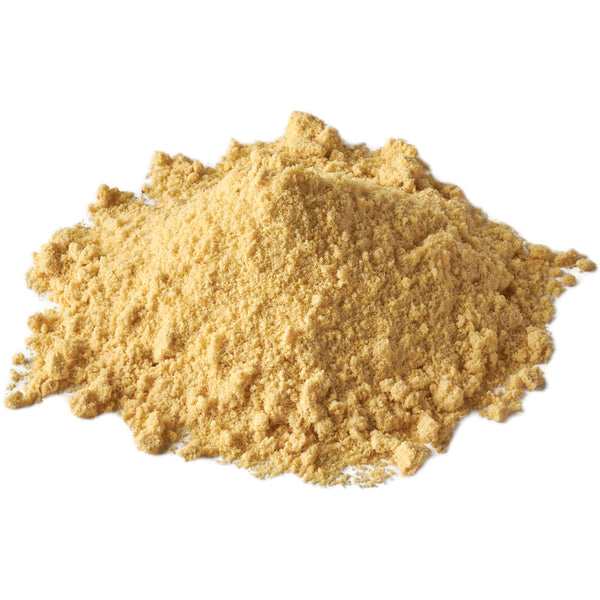

A local product that supports Canadian farmers, artisans and businesses, and reduces the pollution associated with long-distance transport.
Organic Millet Flour "Gluten-Free"
Specifications (Tap to open):
Category:
Shelf Life:
Country of Origin:
Allergen Information (Tap to open):
We take your health and safety very seriously. If you have any allergen inquiries please Contact Us.
If an allergen is present in the product, it will be clearly declared in the ingredients.
"May Contain" statement NEW FOR 2025 (Progressive rollout):
- In 2025 we will be progressively updating our labels and product pictures with our new label that now include a "May Contain" statement.
- The Canadian Food Inspection Agency (CFIA) dictates that "Cross-contamination statements may be declared by food manufacturers and importers".
- That said, we hold ourselves to much higher standards than the CFIA and Health Canada rules oblige. Most companies do not and you will only rarely see "May Contain" statements.
- If there is a remote chance that there might be cross-contamination of a priority allergen, we will declare it on the product label in the form of a "May Contain" statement.
- A "May Contain" statement does not mean that the allergen is present in the product, it is simple a precautionary measure we take to stay the most transparent possible.
- If an allergen is present in the product, it will be clearly declared in the ingredients.
- For example our Quebec made flours come from a mill that makes both oat and wheat flours. Since both allergens are present in the mill we automatically declare the possibility of cross-contamination even if all precautionary measures are taken.
- Only priority allergens are declared in the "May Contain" statement, which are:
- Cereals & Grains: Triticale, Barley, Oats, Rye, Wheat.
- Tree Nuts: Almonds, Brazil Nuts, Cashews, Hazelnuts, Macadamia Nuts, Pecans, Pine Nuts, Pistachios, Walnuts.
- Peanuts
- Sesame
- Eggs
- Milk
- Soy
- Mustard
- Fish
- Seafood: Crustaceans, Molluscs.
- Sulphites
- Priority allergens are decided by government agencies and health boards. To read more on the subject see "Common food allergens - Priority allergens" published by the CFIA.
- Full CFIA cross-contamination statement explanation "Food allergen cross-contamination (or precautionary) statements".






A local product that supports Canadian farmers, artisans and businesses, and reduces the pollution associated with long-distance transport.
Our organic millet flour is made from ground millet, a grain in the grass family that is grown as a crop in many parts of the world. Bakers often appreciate the flour's light texture, and most find that it lends a certain sweet and nutty flavor to breads and other foods. Millet resembles wheat in both appearance and texture, but it is entirely gluten-free, which makes it popular with people who are avoiding gluten.
Millet is a staple in many diets around the world, millet grew wild in Africa for centuries before being cultivated by man. In addition to being nutrient-rich, it grows well in cold, arid regions and can be harvested within 70 days of planting. While it has been primarily cultivated in Africa, Asia, and Europe, it is becoming more popular in the Western world.
Though technically a seed, millet offers a similar nutritional profile than grains and can be prepared in many of the same ways. It looks like little yellow pellets of bird seed (which is, in fact, one of the ways it is used) but it cooks up into a tender grain that has a mild corn flavor. Plus, it is something unique that can help add some flavor variety to your gluten free diet.
Millet is a whole grain, containing the bran, germ and endosperm. Bran is the hard outer coating of a kernel. It has most of the kernel's fiber. It also has vitamins and minerals. The germ is the part that sprouts into a new plant. It has many vitamins, fats and other natural plant nutrients. The endosperm is the energy supply for the seed. It mostly contains starches. It has small amounts of proteins and vitamins. The endosperm has very little fiber.
Compared to other grains, millet is a good source of protein and iron, and is high in dietary fiber.
General Storage Tips:





